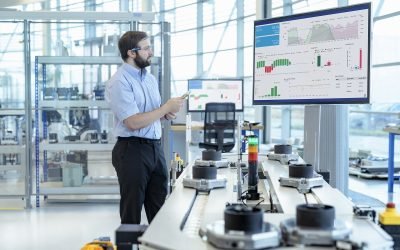Simulation in electric vehicles is one of the main ways to solve noise, vibration and harshness (NVH) problems. In fact, it is impossible to think of the automotive industry without it.
There are two NVH issues about EVs: masking the noise derived from the absence of an internal combustion engine, and increasing the quality of the experience of driving an electric vehicle.
In this article, we present an overview of the main advantages and challenges of simulation in electric vehicles.
How does simulation help in the development of electric vehicles?
Engineering simulation means designing a model to predict the behavior of a system. It can be used in different contexts.
For example, one can measure a car’s performance under different conditions, or understand how a design change can affect the overall performance.
This allows identifying problems before building physical prototypes.
Speaking specifically of NVH, the main benefits are:
Speed of development
Through simulation, it is possible to test different design options. This saves time and money as it allows for more informed decision making early in the design process.
Accurate results
The simulation takes into account a wider range of variables and possible scenarios. This is especially important in EV, where there are different factors to consider to create efficient vehicles with a pleasant driving experience.
Lower development costs
Simulations provide detailed information about a design’s performance under real-world conditions, without the need to build and test real prototypes.
What are the main simulation challenges in NVH development?
Despite the advantages, it is utopian to think of a scenario in which physical tests are completely replaced.
For example, there are cases where individual components do not noise in isolation, but cause NVH issues when mounted within a system.
It would be necessary to do complex modeling and simulations of each element to predict this behavior, but this is not always possible within the costs and needs of a project.
Among the main challenges, we can highlight:
Precision
Firstly, because the behavior of electric vehicles is different from cars with a combustion engine. Furthermore, it can be difficult to accurately model all relevant physical phenomena within complex EV systems.
Some techniques to ensure accuracy are to test multiple simulations with models and assumptions and verify that the results are consistent. Or, compare the simulation results with experimental data. And finally, constantly validating and updating models as new data becomes available.
Interpretation of results
It is not always simple to understand how the behavior of different systems interacts in an electric car. Simplified models or numerical inaccuracies also affect the final result.
That is why it is important to count on the support of specialists in the development of projects. In addition to operating the software, it is necessary to have in-depth theoretical knowledge to perform the modeling and interpret the results.
Complexity
As mentioned earlier, highly complex systems are challenging to simulate. In these cases, it is necessary to include only essential features and eliminate unnecessary details.
This reinforces the importance of having experts take over the NVH needs of engineering projects for electric vehicles (and other types of products). Without theoretical and field knowledge, it is difficult to find a balance between the complexity, accuracy, time and costs of a project.




